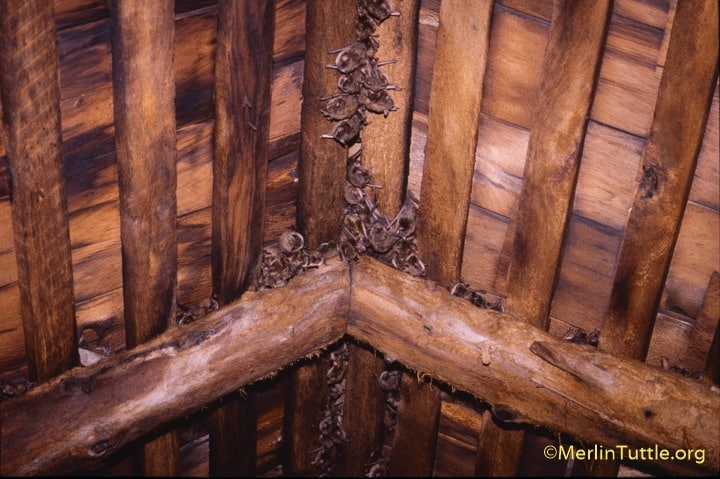Colonial bats can harbor ectoparasites, from bat flies to mites, fleas, and even bed bugs. The good news is that most bat parasites are highly host-specific. Unless they’re starving, they much prefer to remain with their bat hosts. It may also be reassuring to know that disease transmission from bat parasites to humans is exceedingly rare, if it occurs at all. In fact, in a lifetime of studying bats, I’ve never heard of it.
I’ve also never heard of bat parasites becoming a problem in a modern, well-built home. When problems occur, it is most often because a large bat colony has recently been exterminated or excluded from an old building, leaving starving parasites that find their way into human living quarters. Such problems normally resolve themselves within a few days as the parasites die of starvation.
In old homes that have fallen into disrepair, occasional parasites may get lost from their hosts and enter human living quarters through small cracks or other openings in ceilings or walls near where a colony of bats roosts. The least costly, safest solution is to simply seal all such potential entry points, especially those closest to where bats are known to be roosting. Application of pesticides likely would pose greater health risk than the parasites.
Bat colonies living in attics or walls seldom pose a health risk as long as they are excluded from parts of the house occupied by humans. It is exceedingly rare to be bitten by a bat except in self-defense if handled. In such cases, the bat should be submitted for rabies testing. It probably won’t test positive, but don’t take a chance. There is a vaccine available that is highly effective if promptly administered.
I’ve never been bitten by a bat flea or mite, though I have been bitten by bat bed bugs once in a cave occupied by millions of bats. In that case I was spending hours at a time in a photographic blind beneath the bats. As I sat motionless, an occasional bat bedbug attempted to bite me. These likely had fallen from the bats on the ceiling and were starving. If you encounter a serious bedbug problem in your home, it’s probably coming from a source other than bats.
When in caves with huge bat colonies, it is also common for tiny mites to fall on me and become very noisome simply by crawling around on my skin. However, I’m unaware of ever having been bitten by one. A quick shower at home ends the problem.
Note: For advice on medical issues, please consult your family physician. Merlin Tuttle’s Bat Conservation website does not contain medical advice and is not intended as a substitute for such information.
For Further Reading
Greenhall, A.M. 1982. House bat management. U.S. Department of the Interior Fish and Wildlife Service, Washington D.C. Resource Publication 143.
Tuttle, M.D. 2005. America’s neighborhood bats. University of Texas Press, Austin.

